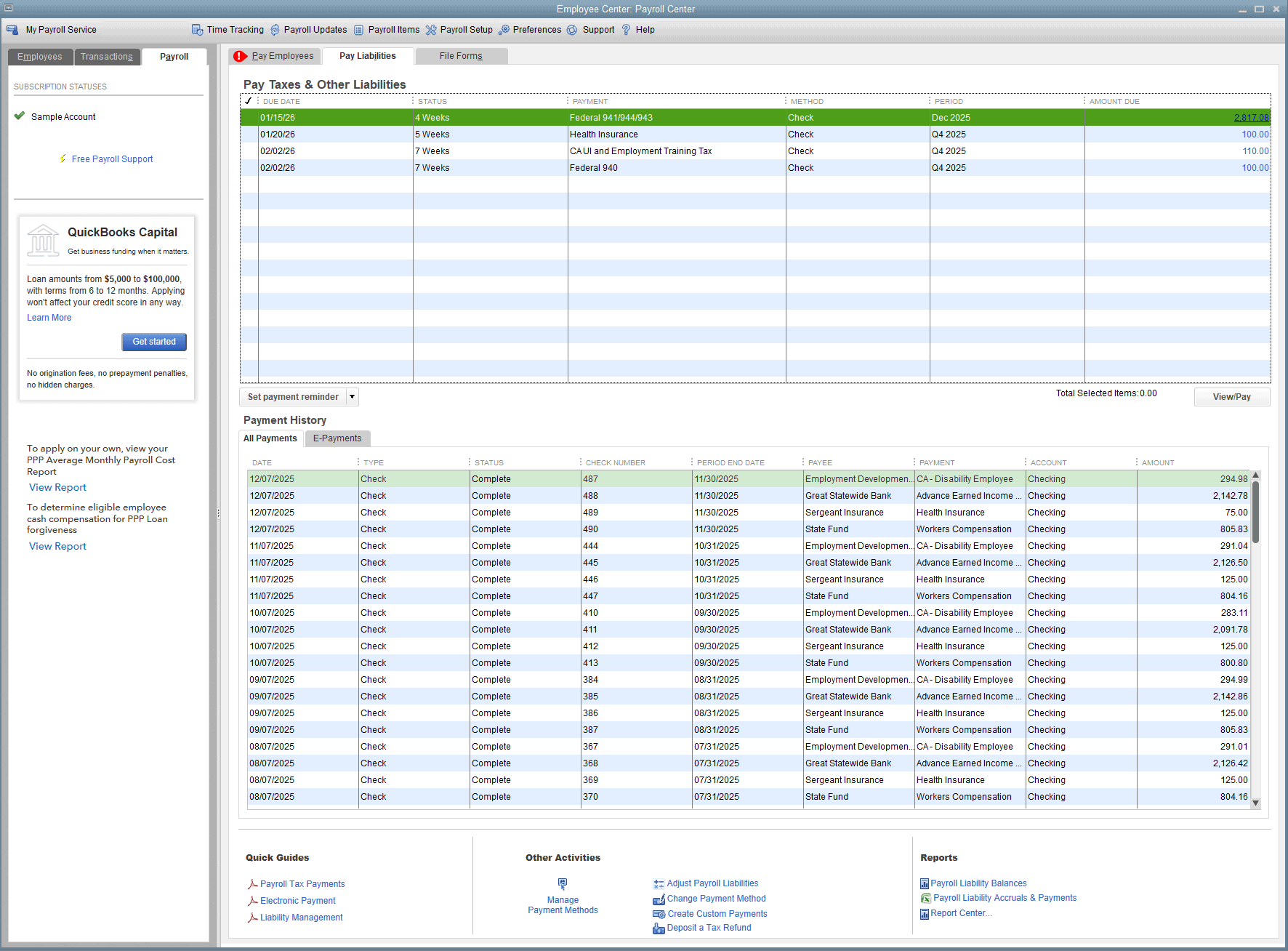


Learn how by reading the knowledge base articlel Change state unemployment insurance (SUI) rates. Employers located in states that have state disability insurance (SDI) must also update their SDI rates themselves.

The QuickBooks Desktop payroll tax table does not include updates to these rates because states assign each employer a unique rate. QuickBooks Desktop payroll subscribers in most states must update their state unemployment (SUI) rates themselves.
#Quickbooks desktop payroll liabilities how to#
To learn how to create payroll liability checks, see the knowledge base article, Set up and pay scheduled and custom (unscheduled) liabilities. By creating payroll liability checks, QuickBooks Desktop can accurately track how much tax and other liabilities you've paid, as well as how much you still owe. Instead, create payroll liability checks to pay a payroll liability. Do not use the Write Checks window to pay liabilities. To learn more, see the knowledge base article, How to set your tax deposit due dates.Ī common mistake among new QuickBooks Desktop payroll users is to pay payroll taxes and other payroll liabilities with the Write Checks window. You must know your tax schedule, so you can pay your payroll taxes on time. Set up and pay scheduled and custom (unscheduled) liabilitiesĮmployers have different payroll tax payment and filing schedules, depending on the size of their payroll.To learn about paying your payroll liabilities, read the following knowledge base articles: You are subscribed to Basic or Enhanced payroll service. You can pay taxes and other liabilities using QuickBooks Desktop. This article provides information about how to pay your payroll liabilities with QuickBooks Desktop.


 0 kommentar(er)
0 kommentar(er)
